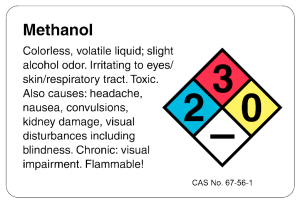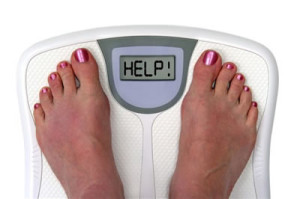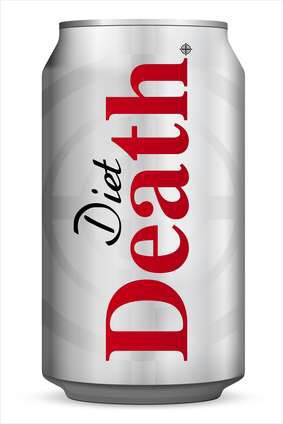A Fight To The Death?
OK, someone has to write it. I’ve looked all over the place, and couldn’t find it. But it seems there is a very serious connection between Aspartame consumption and elevated liver enzymes reflected in GGT levels in blood test.
Why should you care? If you don’t consume anything with Aspartame (aka Nutrisweet, Equal, and in dozens of “no sugar added” products), or know someone who does, then you probably shouldn’t … maybe.
So if you are one who should care, what does this “GGT” level thing mean? Simply put, it’s a check on liver enzymes that doctors don’t often check, but life insurance companies DO check. If it’s slightly elevated, some will send you for more tests, increase your rates, or just turn you down. If it’s VERY high, you’ll get flat turned down. You see, high GGT levels typically tell an insurance company that you’re a ticking time-bomb — probably an alcoholic or drug abuser that’s just not sick enough yet to be falling apart, but that you probably will in a few years. ALL your other blood tests can be perfect — all your other health and vitals can be normal — everything looking great — but GGT is high, and they “know” you’re on your way out. Even if you’re never had a drop of alcoholic beverage or taken any illegal or excessive legal drugs, and have no apparent health issues at all — this can become a real problem for you.
Let’s figure out why… I mean, seriously, how can a teetotaler blip the insurance company’s radar as the town drunk???? You won’t find this in today’s headlines, and certainly NEVER on the back of a Diet Coke can, but if you consume Aspartame, you’re actually consuming one of the most dangerous forms of alcohol there is: methanol.
 Well … you’re not consuming it in that form. You drink an ice cold diet drink. But guess what! 10% of that Aspartame turns into free methanol as it slides down your throat and into your body. Once that stuff hits 86 degrees (12 degree cooler than your body temperature), the nasty stuff starts to happen. If you drink a lot of diet drinks, it’s pretty much assured that you’re an unknowing victim of this stuff. In all fairness, there is a level of consumption that, according to EPA, is under the poisonous range. 4 ounces of diet drink. Yup. That means one 12-oz can of the diet stuff a day is almost 3 TIMES the lethal limit.
Well … you’re not consuming it in that form. You drink an ice cold diet drink. But guess what! 10% of that Aspartame turns into free methanol as it slides down your throat and into your body. Once that stuff hits 86 degrees (12 degree cooler than your body temperature), the nasty stuff starts to happen. If you drink a lot of diet drinks, it’s pretty much assured that you’re an unknowing victim of this stuff. In all fairness, there is a level of consumption that, according to EPA, is under the poisonous range. 4 ounces of diet drink. Yup. That means one 12-oz can of the diet stuff a day is almost 3 TIMES the lethal limit.
Oh, and one more thing — the methanol issue is sometimes dismissed by people (and it’s manufacturers) by saying that methanol is naturally occurring in fruits and vegetables, so it must be OK. But in those, the methanol is neutralized by other naturally occurring chemicals, so it’s not harmful. Not so in aspartame!
Take a look at this excerpt from an article and remember that a word to the wise is sufficient:
Long-Term Damage. It appears to cause slow, silent damage in those unfortunate enough to not have immediate reactions and a reason to avoid it. It may take one year, five years, 10 years, or 40 years, but it seems to cause some reversible and some irreversible changes in health over long-term use.
METHANOL (AKA WOOD ALCOHOL/POISON) (10% OF ASPARTAME) Methanol/wood alcohol is a deadly poison. People may recall that methanol was the poison that has caused some “skid row” alcoholics to end up blind or dead. Methanol is gradually released in the small intestine when the methyl group of aspartame encounter the enzyme chymotrypsin.
The absorption of methanol into the body is sped up considerably when free methanol is ingested. Free methanol is created from aspartame when it is heated to above 86 Fahrenheit (30 Centigrade). This would occur when aspartame-containing product is improperly stored or when it is heated (e.g., as part of a “food” product such as Jello). [or taken into a warm human body]
Methanol breaks down into formic acid and formaldehyde in the body. Formaldehyde is a deadly neurotoxin. An EPA assessment of methanol states that methanol “is considered a cumulative poison due to the low rate of excretion once it is absorbed. In the body, methanol is oxidized to formaldehyde and formic acid; both of these metabolites are toxic.” The recommend a limit of consumption of 7.8 mg/day. A one-liter (approx. 1 quart) aspartame-sweetened beverage contains about 56 mg of methanol. Heavy users of aspartame-containing products consume as much as 250 mg of methanol daily or 32 times the EPA limit.
— taken from a more in-depth article at http://dorway.com/badnews.html
In addition to diet and no-sugar drinks, Aspartame can be found in sugar-free gum, yogurt, ginger pickles, many kids and adult chewable vitamins and drugs, natural fiber laxatives, some prescription drugs, breath mints, toothpastes and mouthwash, flavored syrups in coffee drinks, some ketchup, BBQ sauces, condiments, and many “no sugar added” products.

 Google “Why is it easier to gain weight than lose it?” and you’ll get MILLIONS of results.
Google “Why is it easier to gain weight than lose it?” and you’ll get MILLIONS of results.
 It’s all over radio, TV, newspapers and the internet. So it must be legit!
It’s all over radio, TV, newspapers and the internet. So it must be legit! What are the real facts about diet drinks? You might be surprised. Ignore the hype and focus on the facts.
What are the real facts about diet drinks? You might be surprised. Ignore the hype and focus on the facts.